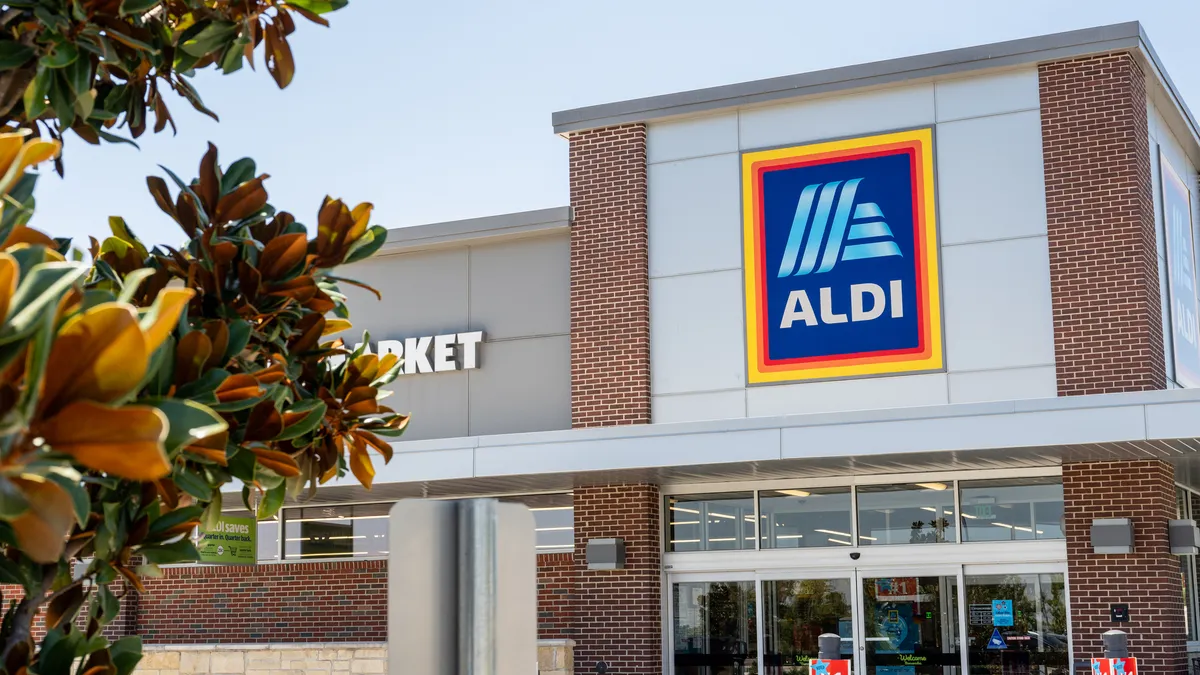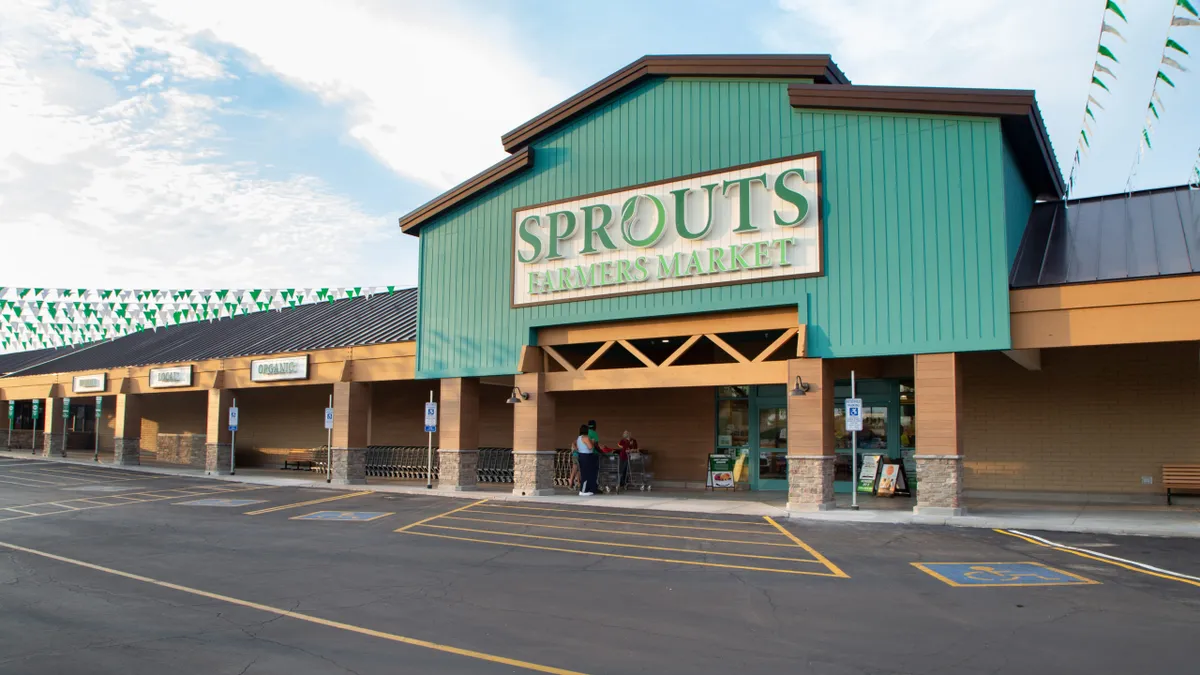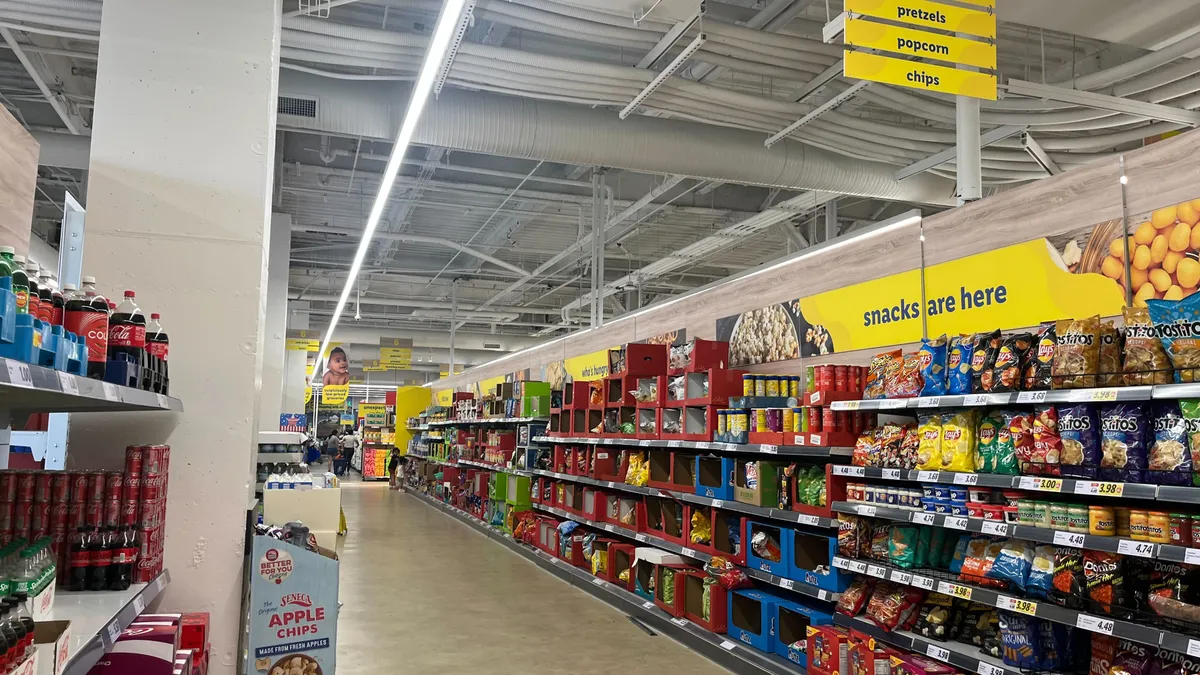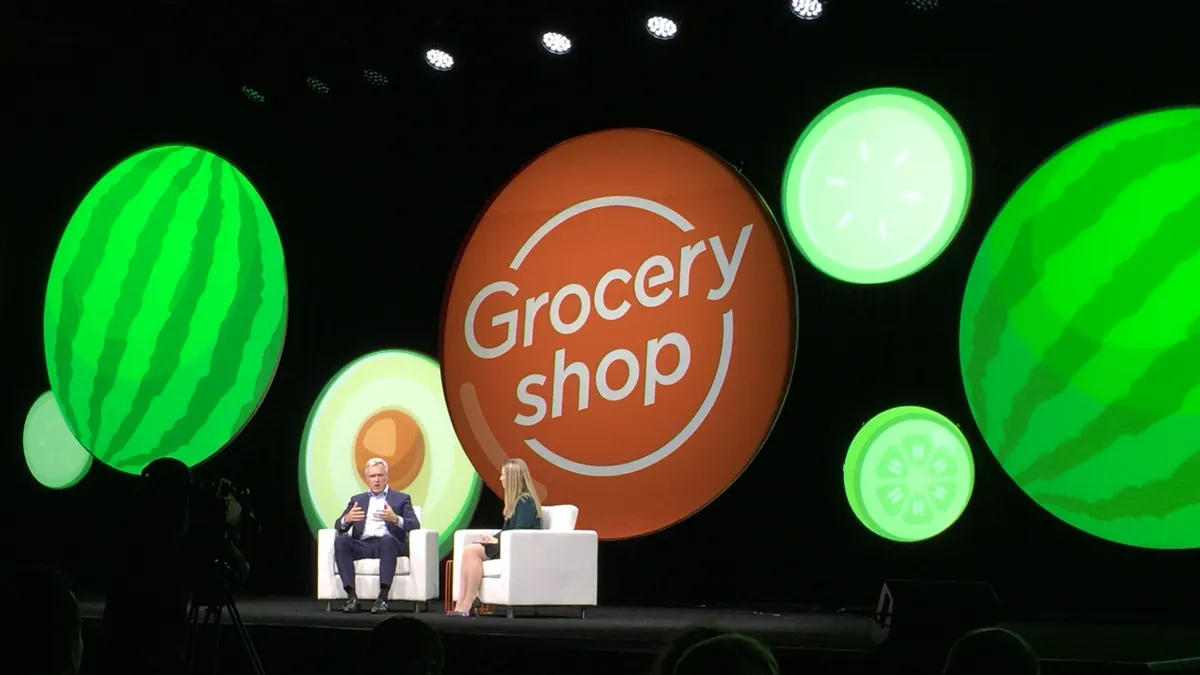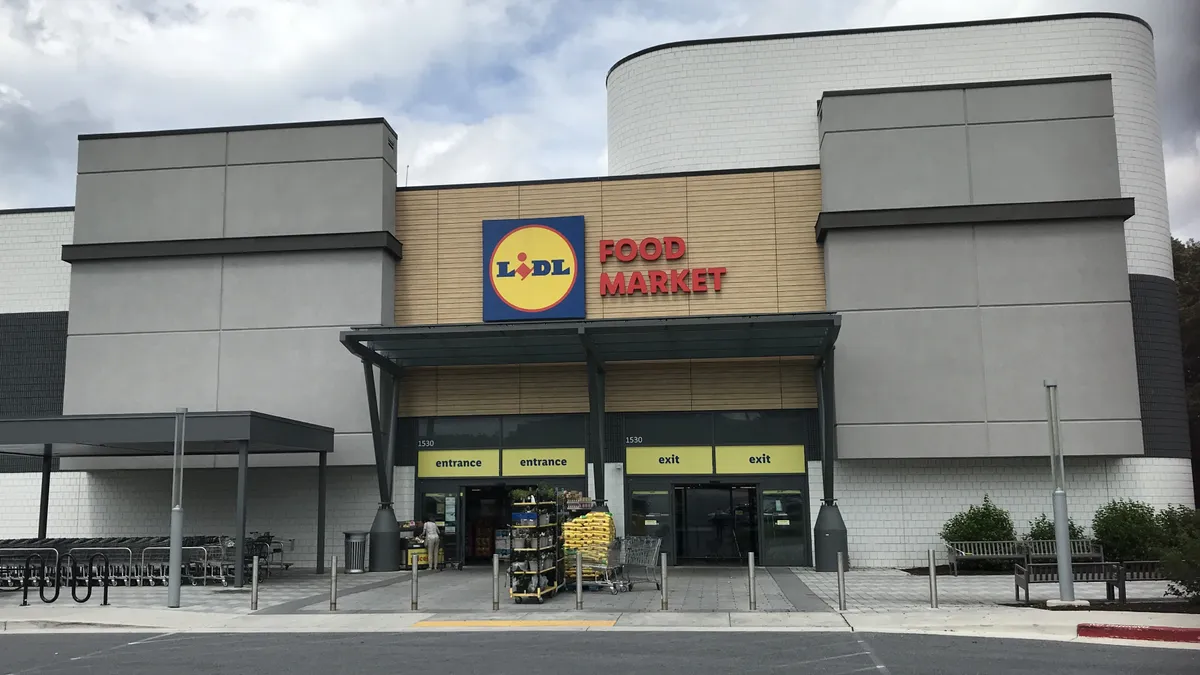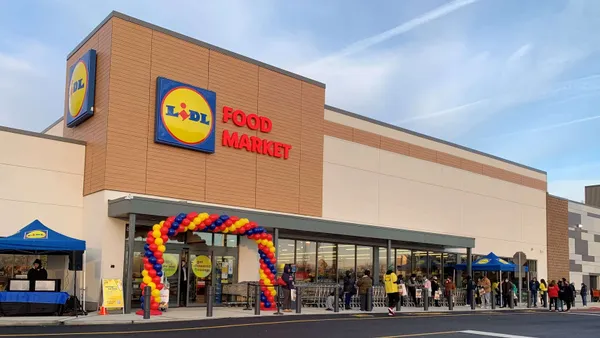As Lidl moves ahead with an ambitious effort to reboot its brand in the U.S., the company aims to more closely align its pitch with what American shoppers expect while also retaining its heritage as a value-first retailer focused on simplicity and efficiency, according to the company’s top stateside executive.
While the German grocery chain defines itself as “The Super-est Market” in its new branding campaign, which began Oct. 16, Lidl has no intention of developing larger stores or expanding its selection to compete with traditional supermarket operators, said Joel Rampoldt, who took over as CEO of Lidl US in mid-2023.
Instead, Lidl’s updated U.S. marketing strategy is centered around attracting more people to its stores by emphasizing that it offers the “freshest possible” produce, meat and baked goods alongside a “manageable amount” of center store choices, Rampoldt said.
Although it has had to retool its approach to American consumers — a significant percentage of whom indicated in research the company conducted that they don’t realize Lidl is a grocer — the discounter isn’t running away from its European roots.
“What we want to be in Lidl US is Lidl,” said Rampoldt. “It’s a proven format that works in dozens of countries, and we want to be true to that — with enough adaptation to the U.S. consumer.”
Rampoldt said Lidl — which runs more than 12,000 stores in 31 countries — has recently seen improving traffic in its U.S. stores and drawn more customers to its loyalty program. He added that Lidl is intent on building on those trends by getting in front of more potential customers through a combination of sharp messaging and expansion efforts focused on the three metro areas the grocer considers its home markets in this country: Atlanta, New York City and Washington, D.C.
Rampoldt would not say how many stores the company plans to add to its fleet, but he said that after trying various sizes, it has “fine-tuned our model to really work in the U.S.”
Going forward, Lidl US plans to focus on stores that occupy about 25,000 square feet, according to the company. The average Lidl store in the U.S. has about 4,000 SKUs.
“What we’re not trying to offer is a 40,000-square-foot store that has 35,000 SKUs in it,” Rampoldt said. “There are customers who will always go to those types of stores for specific products [and] if they really want a particular brand that perhaps we don’t carry, those stores will always be the place that they go for that. But we want to be their first choice.”
Lidl, which runs about 170 stores in nine East Coast states, opened its latest location on Oct. 23 in the New York City borough of the Bronx.
The company’s emphasis on small-format stores gives it an edge as its locations are easier for shoppers to navigate and focus on a limited number of brands and product sizes, Rampoldt said. The company has sought to optimize how its stores are organized and encourage shoppers to move around so they find what they want and also pass items they might not have thought about buying, he added.
Lidl has found that its core customers tend to be young families, and is working especially hard to reach shoppers in that demographic group, Rampoldt added.
Rampoldt made a point of distinguishing Lidl from German archrival Aldi, which has had operations in the U.S. since the 1970s and currently runs more than 2,400 locations in close to 40 states. Lidl puts heavier emphasis on fresh fruit and meat than Aldi, and also stands out because it operates in-store bakeries, he said.
“We actually don’t talk about them that much here inside the company,” Rampoldt said about Aldi. “We talk about all the different competitors against whom we are matching up, where we have opportunities, and from whom we can take business.”
John Clear, senior director in the consumer and retail group at consulting firm Alvarez & Marsal and a former Lidl executive said that while Lidl has a definite advantage over Aldi in terms of its fresh offerings, Lidl still has to watch its rival closely in order to build its relevance with the value-focused shoppers both chains appeal to.
“There are certain areas that you need to be competing with Aldi,” Clear said. “Otherwise [you’ll lose] a huge part of your young family demographic who are very focused on price.”
Rampoldt acknowledged that Lidl has work to do to establish its brand in the U.S. — including in areas where it has put down roots since opening its first U.S. stores in 2017. “There are parts of the country where we have stores, but you could actually drive a long time without seeing” a Lidl location, he said.
Rampoldt declined to specifically discuss the difficulty Lidl has had in gaining traction in the U.S., but he alluded to challenges the company faces as it rolls out its new marketing campaign.
“If you don’t have any weaknesses, you don’t have any opportunity to grow,” said Rampoldt. “But I would couch those weaknesses as being very positive in the sense that if your weakness is that customers don’t really know who you are, then you can introduce yourselves to those customers. And once they know who you are, they will come in and they will keep coming back.”









